


SITE LOGIN
-
REVIEWS
- Ski Gear
- Clothing
- Accessories
- Off-Season Gear
- Lifestyle
- Lodges and Accommodation
- Nutrition
- Manufacturers
- Destinations
- Training
- Gear of the Year
- Best New Summer Gear
-
Holiday Gift Guide
-
Holiday Gift Guide 2024
- Holiday Gift Guide 2024 Base Layers
- MSR Explore Revo Snowshoes
- Fieldsheer Backcountry Heated Jacket
- Fieldsheer Premium 2.0 Merino Heated Socks
- MEC Hut Booties and Slippers
- Arc’teryx Kopec GTX Shoe
- Arc’teryx Kragg Insulated Approach Shoes
- Gregory Verte 18 Backpack
- Grundens Deck-Boss Ankle Boot
- MEC Northern Light Vest
- Montec-Scope-Ski-Goggles
- Mountain Hardware Kor Airshell Hoody
- Mountain Hardware Kor Alloy Crew
- Arcade Atlas Belt
- Dynafit Ridge Dynastretch Jacket
- Shokz OpenRun Pro 2 headphones
- Buff Merino Move Multifunctional Neckwear
- Bootdoc Foot Warmer
- Cotopaxi Allpa 42L Travel Pack
- DPS LastBag
- DPS PHANTOM Glide At-Home Kit
- DPS Mission Quiver Roller
- Dragon Amped sunglasses
- Dragon DX3 Plus OTG photochromic goggle
- Fuse Lenses Anclote Flashback
- Garmin Fenix 8 Solar Sapphire Watch
- Gregory Alpaca Gear Tote 30
- Hotronic Boot Dryer
- MEC Aluminum Pot Set
- Gnara Go There Pants
- Grundens Shackleton 2.0 Duffel
- Jones Deeper 19L Backpack
- Le Bent Core Midweight Crew base layer
- Leatherman ARC
- Montane Nordes Hooded Softshell Jacket and Pants
- Helly Hansen Odin Everdown Hooded Jacket
- Helly Hansen Verglas Infinity Shell Jacket 2.0
- Montec Fawk Ski Jacket
- Pomoca Free Pro 2.0 Skins
- Rab Glaceon Pro Down Jacket
- Rab Khroma Converge GORE-TEX Ski Jacket & Pants
- Smith Squad MAG Goggles
- Stellar Guide Aerogel Hybrid Hood 2.0
- Stellar Ultralight Down Hood 2.0
- Arms of Andes Alpaca Half Zip & Wool Leggings
- Cotopaxi Allpa 70L Duffel Bag
- Giro Taggert Mips Helmet
- Loonr Hi Flyer Boots
- Paka Mountain Crew
- Roll Recovery SUPERPLUSH Classic Shoes
- Smartwool Smartloft Hooded Jacket and Pants
- Ortovox Switchback 32 Ski Touring Backpack
- Cotopaxi Allpa X 3L Hip Pack
- Giro Sagen Ski Goggle
- Icebreaker Ski+ Over the Calf Socks
- MEC-Fireside-Fleece-Snap-Pullover
- Montec Roast Mittens
- Mountain-Hardware-Sunblocker-Hoody
- MSR Titan Kettle 900 ml
- Tailgate-Industries-The Gondom-Goggle-Cover
- Wild Country Rope Tarp
- Bootdoc Race Merino PFI 50 Socks
- Remind Soles Destin Impact Insoles
- Kari Traa Rose Baselayer Half Zip Top and Pants
- Le Bent Midweight Quarter Zip
- Ombraz Dolomite Sunglasses
- Ortovox Fleece Rib Hoody
- Ortovox Merino Thermovent Base Layer
- Smartwool Intraknit Merino Tech Half Zip
- Suunto Wing Bone Conduction headphones
- Sweet Protection Adapter Mips Helmet
- Sweet Protection Connor Rig Reflect Goggles
- Zeal Optics Selkirk Glacier Glasses
- Norrona more flex1 Pants
- Norrona Octa Zip Hood
- Norrona Lyngen Alpha100 Zip Hood
- MEC Deluxe Pillow
- Holiday Gift Guide 2023
- Holiday Gift Guide 2022
- Holiday Gift Guide 2021
- Holiday Gift Guide 2020
- Holiday Gift Guide 2019
- Holiday Gift Guide 2018
- Holiday Gift Guide 2017
- Holiday Gift Guide 2016
-
Holiday Gift Guide 2024
- Pro Skier Interviews
- NEWS
- STORE
- ROUTES
- LODGING
-
VIDEOS
- 2022/23 Gear Reviews
- 2021/22 Gear Reviews
- 2020/21 Gear Reviews
- 2019/20 Gear Reviews
- 2018/19 Gear Reviews
- 2017/18 Gear Reviews
- 2016/17 Gear Reviews
- 2015/16 Gear Reviews
- 2014/15 Gear Reviews
- 2013/14 Gear Reviews
- 2012/13 Gear Reviews
- 2011/12 Gear Reviews
- 2020 Outdoor Retailer
- 2019 Outdoor Retailer
- 2018 Outdoor Retailer
- 2017 Outdoor Presscamp
- 2017 Outdoor Retailer
- 2016 Outdoor Presscamp
- 2016 Outdoor Retailer
- 2015 SIA Show
- 2014 Outdoor Retailer
- 2013 SIA Show
- 2012 Outdoor Retailer
- Tips and Tricks
- Backcountry Skiing
- SAFETY
- ABOUT
- REVIEWS
- NEWS
- STORE
- ROUTES
- LODGING
-
VIDEOS
- 2022/23 Gear Reviews
- 2021/22 Gear Reviews
- 2020/21 Gear Reviews
- 2019/20 Gear Reviews
- 2018/19 Gear Reviews
- 2017/18 Gear Reviews
- 2016/17 Gear Reviews
- 2015/16 Gear Reviews
- 2014/15 Gear Reviews
- 2013/14 Gear Reviews
- 2012/13 Gear Reviews
- 2011/12 Gear Reviews
- 2020 Outdoor Retailer
- 2019 Outdoor Retailer
- 2018 Outdoor Retailer
- 2017 Outdoor Presscamp
- 2017 Outdoor Retailer
- 2016 Outdoor Presscamp
- 2016 Outdoor Retailer
- 2015 SIA Show
- 2014 Outdoor Retailer
- 2013 SIA Show
- 2012 Outdoor Retailer
- Tips and Tricks
- Backcountry Skiing
- SAFETY
- ABOUT
TOP VIDEOS
Transcend GPS goggles
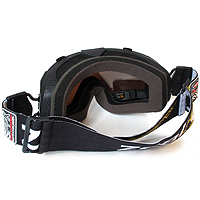 I recently had the opportunity to try a pair of Recon Instruments’ new Transcend GPS goggles, developed in partnership with Zeal Optics. Touted as the “world’s first GPS-enabled goggle,” I was both curious and a little skeptical of these techno-specs, but quickly learned there could be some powerful and useful applications for this perceivably over-the-top ski accessory.
I recently had the opportunity to try a pair of Recon Instruments’ new Transcend GPS goggles, developed in partnership with Zeal Optics. Touted as the “world’s first GPS-enabled goggle,” I was both curious and a little skeptical of these techno-specs, but quickly learned there could be some powerful and useful applications for this perceivably over-the-top ski accessory.
I demoed the SPX model of the Recon-Zeal Transcend goggle, featuring a standard polarized lens, compared to the SPPX, which has transition lenses. But before I get to the fit and feel, the real meat and potatoes of these goggles is the GPS functionality. The current model provides real time statistics such as speed, altitude, vertical odometer, latitude/longitude location and a stopwatch/chronos mode, all viewable via a small LCD display mounted inside the bottom right hand corner of the goggles.
It was a little distracting to have the small screen in the bottom corner, tempting you to take your eyes off the ski line and sneak a peak at your speed. However, a little self-control and fear fixes this problem. When you get home, you can upload the day’s data on Recon’s useful and user-friendly software to manipulate the information in different ways, including syncing with Google Maps for the full meal 3-D deal. Recon also offers HQ Online, which allows people to share their data and trips with other users.
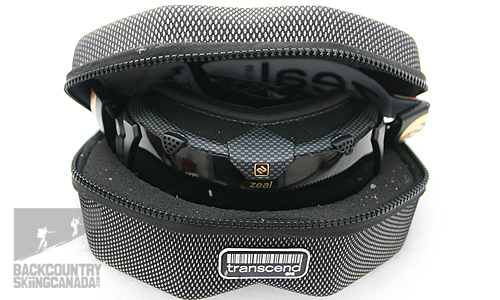

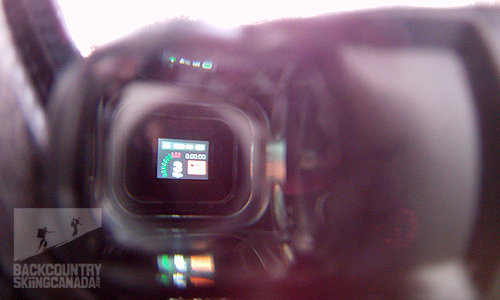
While all of this was nifty, I just couldn’t justify the goggles’ hefty price tag of $399. However, I learned that Recon is in the process of developing universal “Android operating system” to enable 3rd party developers to create applications, based on the GPS data, for various purposes. Once the power of the GPS is unlocked, I can see many practical ways to use these goggles – be it race training, backcountry exploring, search and rescue or developing routes for guidebooks – which could launch them into a new realm of usefulness.
Three control buttons are located on the right side of the goggles, allowing fairly user-friendly functionality as long as you take your gloves off. It would have been nice if there were some brail-type features to ensure you’re fingers are pressing the correct buttons. However, I learned the next generation of the Transcend will come with a wireless remote you can place anywhere on your body, greatly increasing the ease of use. Overall, the quality of the goggles was good and the stated 7-hour battery life via an internal lithium-ion battery was just shy of its claim.

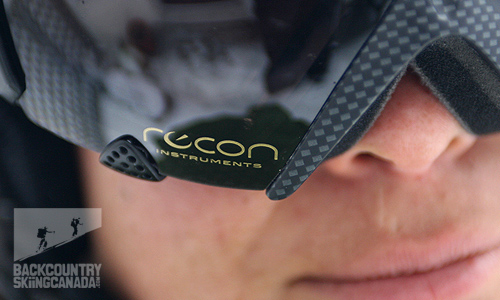
Now for the fit – honestly, these goggles just didn’t fit my face. Not all goggles are the same, admittedly, and different brands fit differently, but typically I can make most goggles work. There is a noticeable girth to the Transcend and I found them pressing on my Giro helmet somewhat annoyingly, something I haven’t experienced with most other brands. Additionally, I found the optical quality not up to snuff compared to some other high-end brands, especially for a goggle of this price. There were noticeable – albeit slight – distortions in the lenses themselves. All that said, Recon told me they are partnering with several other goggle manufacturers – in addition to Zeal Optics - next year, so it’s likely next year’s generation will have models to fit most faces and additional lens options.
Another gripe I have is the screen itself. I could barely see it without pushing the goggles to one side. Though the goggles were designed so 99 percent of humans can see the screen, I had a hard time seeing the screen as did others that tried them on. I thought this curious and mentioned it to Recon, and they indicated this is also rectified in the next generation of goggles by utilizing a widescreen display on a pivoting arm.
All in all, I think there is definitely a future for GPS goggles and it’s great to see a British Columbia-based company such as Recon leading the charge. With the ability to create 3rd party applications, there’s no doubt these could be useful beyond the techno gadgetry appeal. But I’d wait on dropping the coin until we see some different models and different applications hitting the market.

Specifications:
• Real time statistics: speed, altitude, vertical, and total distance odometers, run-counter, temperature, stopwatch/chrono mode, clock
• Logs averages, maximums and minimums for each run and over your entire day
• Full GPS and onboard sensor technology
• Head-mounted, full-color micro LCD display
• Several days of memory storage
• Micro USB port for charging and data transfer
• Google maps overlay
• Total weight: 257 grams
• Rechargeable lithium-ion battery with 6-8 hour run time based on operating environment
• English/French Language
• Imperial/Metric Units
Includes:
• Protective hard case
• Lens cleaning bag
• Micro-USB charger with European and North American adapters
• Recon HQ software for tracking your trips and sharing online
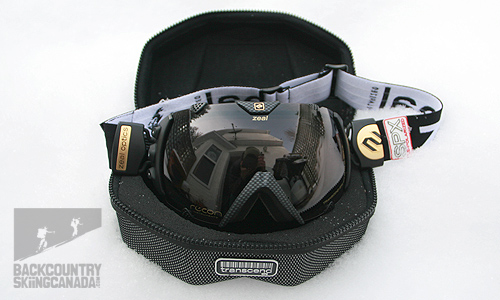
The Verdict:
All in all, I think there is definitely a future for GPS goggles and it’s great to see a British Columbia-based company such as Recon leading the charge. With the ability to create 3rd party applications, there’s no doubt these could be useful beyond the techno gadgetry appeal. But I’d wait on dropping the coin until we see some different models and different applications hitting the market.
SPECS:
Price: SPX model $399 SPPX model $499 CAN
PROS:
World's first GPS enabled goggle.
Fun to calculate total vert, speed, number of laps, etc.
Good software and Google map interface.
Android application development in the 2nd generation will enable many potential uses and greater functionality.
Additional Goggle versions by other manufacturers in the next generation will offer more fit options.
CONS:
Heavier than a regular goggle.
Bulky design didn't fit helmet/face very well.
LCD screen difficult to see.
Expensive.
Rating: 6/10
Ease of use 1/2
Features 1.5/2
Quality 2/2
Size / Weight 1/2
Price .5/2
This is only our opinion. Do you disagree? Did we miss something? Are we totally out to lunch? Join the discussion in the forums here, and let us know what you think. People like/dislike gear for different reasons so chime in and we'll get a well-rounded evaluation.
Back to the rest of the reviews.
Backcountry skiing is an inherently dangerous activity that requires experience and knowledge to travel safely. Any of the routes on this site may be dangerous depending on conditions. You are responsible for your own safety in the backcounty—the team behind backcountryskiingcanada.com disclaim any responsibility for any injury resulting from people travelling on routes described on this site. To read our Terms of Use and get all the details, read HERE.
Copyright © 2023-24 Backcountry Skiing Canada. All Rights Reserved.







